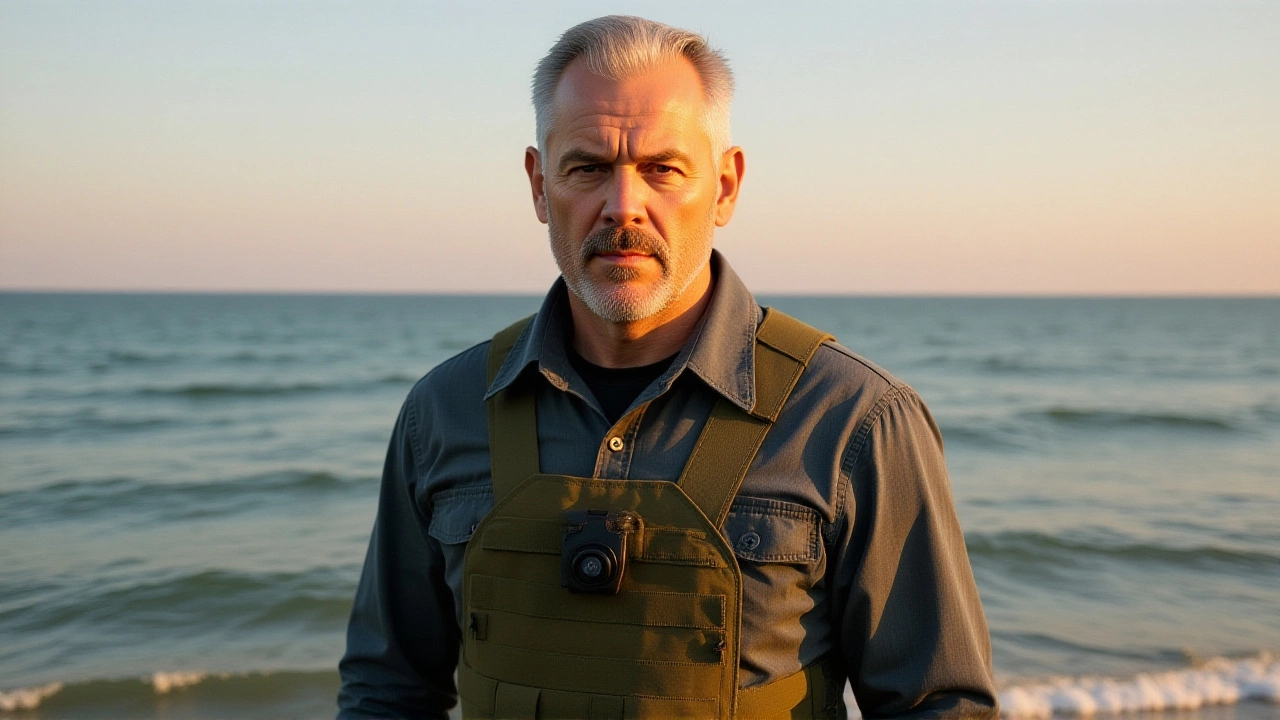When Eric Dane, actor diagnosed with ALS, teamed up with the nonprofit I AM ALS on September 15, 2025, they unveiled a daring $1,000,000,000 fundraising drive called Push for ProgressUnited States. The goal: secure a three‑year federal funding boost for ALS research and to renew the Accelerating Access to Critical Therapies for ALS Act. If successful, the plan could reshape treatment options for roughly 30,000 Americans living with the disease.
Background on ALS and the Accelerating Access Act
Amyotrophic lateral sclerosis, first described by Jean‑Martin Charcot in 1869, has remained fatal for more than a century and a half. In the United States the National Institutes of Health traditionally allocates about $100 million a year to ALS research, a fraction of the support given to comparable neuro‑degenerative illnesses. The Accelerating Access to Critical Therapies for ALS Act, passed in 2022, was intended to fast‑track promising drugs through the FDA pipeline, but its sunset provision threatens to let that progress lapse.
Advocates argue that without a renewed legislative backbone, the modest pipeline of 15 + clinical trials could stall. That’s why the law has become a rallying point for patients, families, and a handful of high‑profile supporters.
Launch of the "Push for Progress" Campaign
The campaign kicked off with a 53‑second video posted to I AM ALS’s official YouTube channel. In the clip, Eric Dane spoke directly to viewers: “America, living with ALS… we’re done accepting the status quo. We need the fastest path to a cure. That’s why I’ve partnered with I AM ALS on the Push for Progress.” He emphasized the $1 billion target and urged fans to donate at iamals.org/progress.
While the video was crisp, a small slip—pronouncing the organization as “IMALS”—caught the eye of longtime supporters, who quickly corrected the branding on social media. The nonprofit, founded by the late Pat Quinn and Pete Frates, operates a remote network of volunteers across the country, and now leans heavily on Dane’s celebrity platform to rally a broader base.
Political Push in Washington, D.C.
Less than three weeks after the launch, Dane met with Rep. Eric Swalwell (D‑CA‑14th) to discuss the legislation’s renewal. Swalwell, a former tech entrepreneur turned congressman, has long championed biomedical research funding and pledged to shepherd the bill through the 118th Congress before its January 3, 2027 adjournment.
The meeting, held in an undisclosed conference room on Capitol Hill, centered on a petition drive slated to close on December 15, 2025. Over 200,000 signatures are aimed for, a number that could tip the scales when the budget committee reviews the FY 2026 appropriations.
"Eric’s story puts a human face on a policy issue that often feels abstract," Swalwell told reporters. "If we can lock in a billion dollars, we’ll finally give researchers the runway they need to move from promising leads to real therapies."

Potential Impact of a Billion Funding Boost
Analysts at the Brookings Institution estimate that a sustained $1 billion injection could double the number of active ALS trials within five years, potentially delivering new treatments to the estimated 5,000 Americans diagnosed annually. Moreover, the infusion would allow the NIH to expand its grant programs, fund large‑scale biobank initiatives, and support innovative gene‑editing research.
For patients, the promise is tangible: faster access to drugs that are presently stuck in Phase I or II, more clinical sites across the Midwest and South, and reduced out‑of‑pocket costs for approved therapies. Families hope the renewed act will also streamline insurance approvals, a chronic bottleneck in getting experimental treatments to those who need them most.
Next Steps and Timeline
- September 15, 2025 – Launch of Push for Progress via YouTube.
- October 1, 2025 – Los Angeles Times feature on Dane’s advocacy.
- December 15, 2025 – Petition signature deadline.
- Early 2026 – Congressional hearings on the Accelerating Access Act renewal.
- Fiscal Year 2026‑2028 – Targeted $1 billion federal appropriations.
The campaign’s organizers have scheduled a series of town‑hall events in Los Angeles, New York, and Atlanta throughout Q4 2025, each designed to amplify donor voices and press lawmakers. As the deadline looms, the partnership between a Hollywood star and a patient‑led nonprofit underscores how personal narrative can pivot national policy.
Frequently Asked Questions
How does the Push for Progress campaign affect ALS patients?
If the $1 billion goal is met, patients could see new drugs move faster from the lab to clinics, cutting the average delay from years to months. The funding would also expand trial sites, making participation easier for people outside major research hubs.
What is the Accelerating Access to Critical Therapies for ALS Act?
Enacted in 2022, the act streamlines FDA review pathways for promising ALS treatments and earmarks federal money for research. Its renewal is crucial because without it, many experimental therapies would lose the regulatory fast‑track that speeds patient access.
Why is actor Eric Dane leading this effort?
Diagnosed with ALS in 2023, Dane’s public profile brings media attention and donor reach that grassroots groups alone struggle to achieve. His personal experience adds urgency, turning abstract policy debates into a lived reality.
What role does Rep. Eric Swalwell play in the campaign?
Swalwell is acting as the congressional liaison, championing the bill’s renewal and coordinating the petition drive. His position on the House Energy and Commerce Committee gives him leverage to influence the budget language that would fund the initiative.
Are there any criticisms of the $1 billion target?
Some policy analysts caution that such a large, single‑year allocation could crowd out funding for other rare diseases. They argue for a phased approach that ties disbursements to measurable milestones, ensuring accountability and sustained progress.
